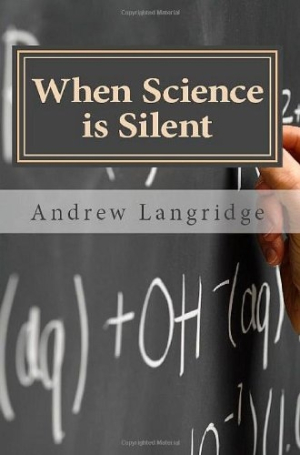
When Science is Silent
The Limits of Natural Enquiry
Modern society trusts science. We look to the scientific method for solutions to problems ranging from individualized medical treatment to international space exploration. But what about the things science doesn’t address? What about poetry, art, and morality? Is there a place for science in these fields, and if so, what part does science play? These are the questions explored by Andrew Langridge in this wide-reaching study of the philosophy of science, When Science is Silent: The Limits of Natural Enquiry.
Langridge holds that our collective reliance on “naturalism”—the assumption that science is the ultimate authority on everything—marginalizes other modes of inquiry such as art, history, and politics. For instance, he suggests that the modern effort to equate the human mind with the human brain is too reductionist, and that we need to re-establish moral and aesthetic modes of inquiry.
Interestingly, Langridge puts forth his criticisms of science in the careful, logical language of science itself. This is not a metaphysical, New Age exploration, but rather a painstakingly deliberate examination of humanity’s beliefs. Langridge avoids blanket statements in favor of highly articulate, if often convoluted, observations. He says things like, “The objective domain appears to be progressively taking over the subjective domain with advances in psychology and neuroscience meaning that subjective beliefs are increasingly being discussed in objective terms.” His words are not meant for the casual reader, but rather for philosophy students and academics.
Indeed, readers with a background in philosophy would be an ideal audience for When Science is Silent. Langridge surveys the field of philosophers, from Plato to Pinker, sometimes with breathtaking speed. A single page includes ideas from Socrates, Hume, Iris Murdoch, and Richard Dawkins. A bibliography provides a comprehensive reference list for all of these, but the learning curve may seem steep for the uninitiated.
Langridge also includes quotations from artists and excerpts from poems, and these provide some of the clearest illustrations of his ideas. After lengthy consideration of the power of science versus art to convey a person’s experience, he includes an excerpt from a Robert Frost poem, “After Apple Picking,” that richly evokes point of view in a way no scientific experiment could. Shakespeare, Rothko, and Bach all appear amidst the scientists and philosophers, each somewhat isolated from the other. Additional comments from Langridge on the connections here would give them more weight.
Although Langridge addresses different concepts in each chapter—history, art, artificial intelligence, and so forth—there is a fair amount of repetition and quite a few references to previous chapters. The dedicated reader may enjoy going back to reconsider a previously presented idea, but many could find the “See Chapter 4” references annoying.
When Science is Silent is appropriate reading for a philosophy class, where the concepts could be discussed among students and reinforced with further reading.
Reviewed by
Sheila M. Trask
Disclosure: This article is not an endorsement, but a review. The publisher of this book provided free copies of the book and paid a small fee to have their book reviewed by a professional reviewer. Foreword Reviews and Clarion Reviews make no guarantee that the publisher will receive a positive review. Foreword Magazine, Inc. is disclosing this in accordance with the Federal Trade Commission’s 16 CFR, Part 255.
